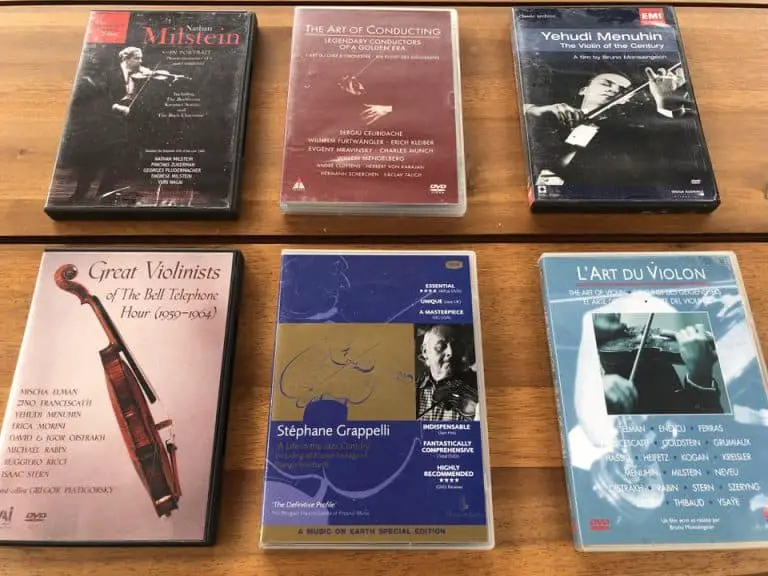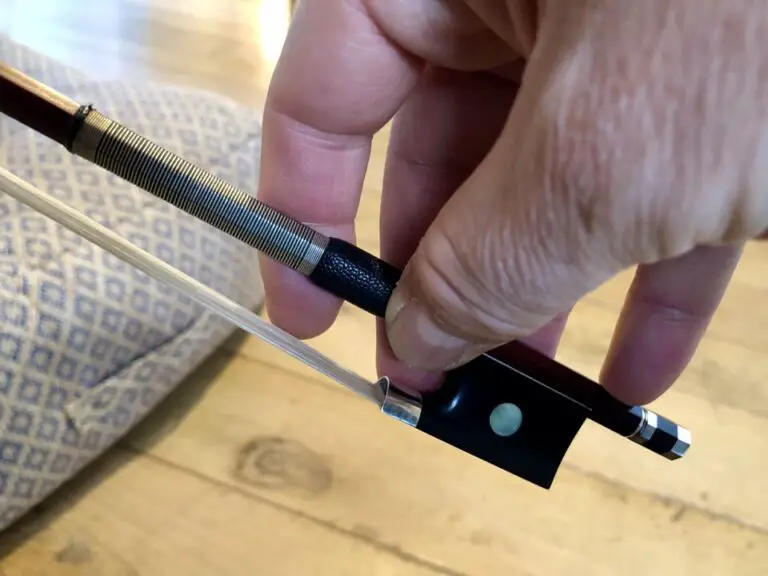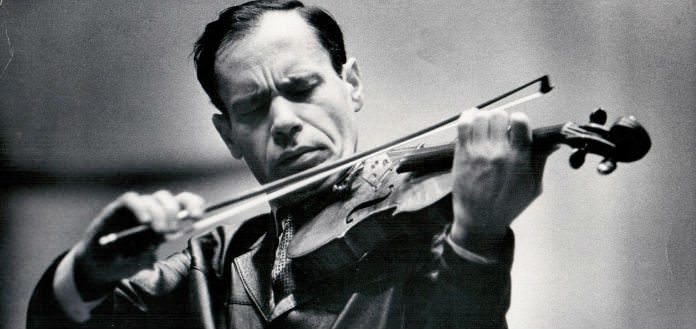Are Electric Violins good for Beginners? 5 things to consider
As electric violins are quiet they tend to squeak less. Maybe they don’t have such a harsh sound at the beginning. Plus, you can play with headphones: your neighbors or your family won’t be able to hear you or to suffer from your first notes. So is it a good idea to start with an electric violin instead of an acoustic one?
You should only play the electric violin if you like that sound and plan to play in a band. Electric violins shouldn’t be considered an easier alternative to acoustic violins. Even if the sound is easier to produce, you won’t learn the proper way of generating a sound on a violin which might be detrimental later. If you want to play in a modern band: you can start with an electric violin. If you want to eventually play acoustic, start with an acoustic instrument.
We’ve all been there. It’s easy for beginners to be overwhelmed when they’re first trying something new. Although it may seem easier on the surface to start with an electric violin rather than an acoustic one, there’s a lot of factors you need to consider before you dive into your musical journey. If the idea of an electric violin appeals to you because it sounds easier to learn, you should reconsider whether it’s a good idea to learn with that crutch or to take the classic approach and benefit yourself in the long run.
Playability
Part of the stigma surrounding electric violins stems from their supposed ease of use, but this is bound to vary per model. For the most part, the instruments are functionally similar. While some electric violins will come with a substantial reduction in body size, some will maintain the dimensions of an acoustic violin and, sometimes, even come with a bit more weight to it. This, as you may have guessed, is because acoustic models are hollow. If you were to fill the space inside an acoustic violin, you’d be looking at one heavy chunk of wood. On the other hand, hollow or semi-hollow electric violins eliminate this concern for the most part, but they often come with a much steeper price tag.
Furthermore, electric violins tend to have somewhat lower action (the distance between the strings and the fingerboard), which certainly makes playing easier. In some models, you may also find that the fingerboard feels more accessible given the reduction in body size. In theory, these qualities make the instrument easier to play, but that may not necessarily be a good thing when you’re first learning how to play.
Type of sound
A big reason you may not want to start off with an electric violin is because of the different sounds produced by the two variants. It’s safe to say that acoustics are by far much more natural-sounding instruments– literally. Their sound is naturally produced entirely by your motions resonating through the wood it’s made of. This is completely different from electric violins which turn your sound into an electric signal before it is then interpreted by whichever amplifier/effects system you prefer to use. Electric violins can be mixed in a way that tries to imitate the sound of an acoustic violin, but at the end of the day, it’s just that: an imitation.
That’s not to say electric violins don’t have their purpose, though. They’re a popular choice for artists breaking out of classical performance norms, and if you’re after a more avant-garde sound, there’s no debating that electric violins are more suited for the job. Having said that, it’s unlikely that a beginner is going to be treading such ground right off the bat. For all of these reasons, teachers tend to prefer their students begin with acoustic violins. It’s better to learn how the instrument works before trying to break new ground with it, and if you want to manipulate that classic sound, it’s best that you know how to produce it in the first place.
Ease of practice
This is one way in which the electric violin takes the cake. A common concern for many beginners is whether or not their volume will be excessive for their environment, especially if they happen to live in an apartment, a condo, or any such living space that shares walls with another. Besides, let’s face it: when you’re starting off, chances are you’re going to be a bit rough around the edges, and you’re probably not going to be too keen on letting everyone around you hear your growth process. Acoustic violins are, frankly, designed to be quite loud, so it’s understandable why a beginner might look to the electric violin when starting off.
However, you should consider when you’re starting off whether or not this pro is worth all of the cons that come with it. If you get creative, it’s possible to maintain a reasonable playing volume with an acoustic violin, albeit not in the most optimal conditions. If you search around the web, you’ll find all sorts of humorous anecdotes of people hiding away in their cars somewhere or tracking when their neighbors aren’t home so they can practice in private. A much less goofy option is to apply a mute, a device which, you guessed it, mutes your strings. It won’t completely silence your instrument, but it may reduce its volume enough to make playing at home viable. Similarly, some suggest plugging the instrument’s f-holes with something sound dampening, such as a clean cloth, to reduce your playing volume. Either of these options will certainly reduce the quality of your instrument’s sound while practicing, but this is probably a better compromise than rejecting the instrument altogether in favor of an electric violin and its tonal tendencies.
I have practiced both ways. I have used many kinds of mutes to be able to play on my acoustic violin in a quiet environment. It is important to practice with the instrument you will perform your concert on. But it gave me the unconscious habit not to apply pressure on the strings which deteriorated my sound.
I have practiced a lot with my electric violin with headphones and felt better about playing forte on it. So, if you do not plan to play classical music, I think it is perfectly ok to practice on your electric violin.
Difficulty of transitioning from an electric violin to an acoustic
This is the real reason beginners shouldn’t start with an electric violin. No amount of research, practice, or preening of your technique will change the fact that these two instruments are different. It may be true that some electric violins are easier to play, but that’s exactly why you shouldn’t start with one. Beginners trying to learn on electric violins miss out on vital experience only gleaned from the real deal. The connection and comprehension of the instrument that can only be found in an acoustic are critical to any player’s development.
The way the sound is produced on a classical violin is quite different, less forgetting. The placement of the bow on the string (point of contact) and bow pressure have to be more precise than on electric violins.\
Electric violins are more forgiving, allow less pressure (you have an amp after all) have a quicker reaction to bow strokes. You might develop the bad habit of having a “surface sound”.
Read this article where I detailed how the sound is produced on a violin for further details.
An electric violin will not respond to your touch quite the way an acoustic violin will, and it certainly won’t sound the same. You would be doing yourself a disservice to begin with an electric violin if your goal is to learn how to play the violin. Unless you’re explicitly interested in the unique sound profiles and unconventional productions that come with an electric violin rather than any classical production, you’re probably better off starting with the tried-and-true basics.
If you’re a beginner looking to try an electric violin because it sounds easier, do yourself a favor and give the basics a shot first. For most players, an acoustic violin is the better route. It may be easier to learn on an electric violin as a beginner, but it won’t be easier on you in the long run.
In conclusion
It all comes to where you want to go. If you like to play modern music, play with friends in a band, experiment with sounds, then you can definitely start on an electric violin and never go back.
But if you want to play classical music, or acoustic music one day, don’t start with an electric violin as an easy way to start: you will regret it.
If you are still wondering, let’s take into account the difference in price between an electric violin and an acoustic one. I have listed the price in range in that blog post.
The gear and products I use and recommend for my electric violin
First, If you want to hear your electric violin, you need to either use headphones, plug it into an amp, or an audio interface.
The small amp I use and recommend if you want to practice at home is the great Yamaha THR10 from the THR series. It is portable and not expensive, easy to use and set up.
If you want to record yourself or plug your violin into headphones, your laptop, or your phone, a good and cheap digital audio interface I can recommend is the iRig HD2, which is more and more affordable on Amazon.
I typically use Thomastik Dominant strings on my electric violin. They come quite cheap on Amazon considering their quality and sound. Synthetic core strings work well on Yamaha electric violins.
Lastly, I use mainly Dominant rosin as well on my electric violin, as it has been designed to go with Dominant Strings.
You can check out in detail all the stuff I have tested and used on my recommended product page where I go into more details.






